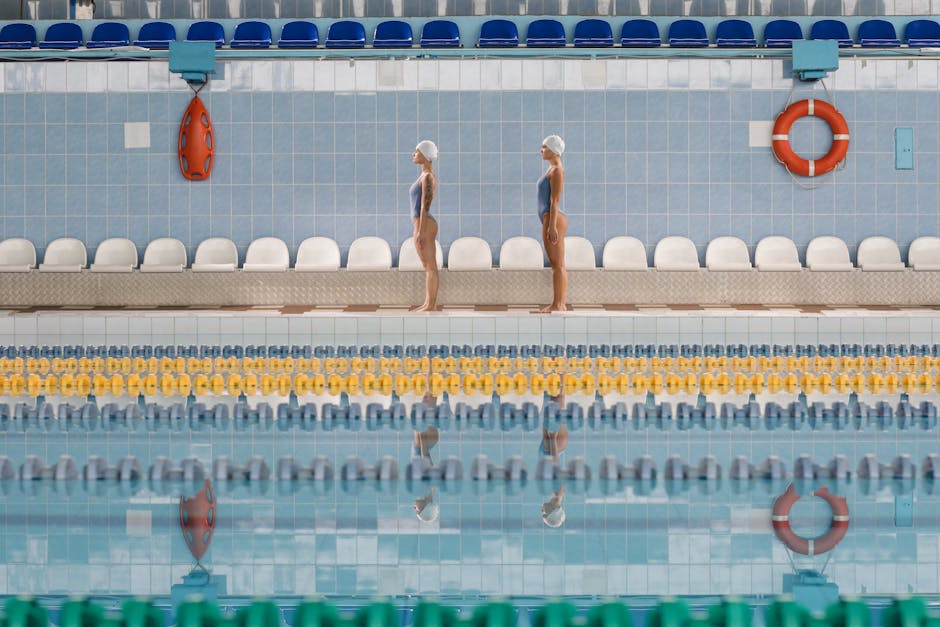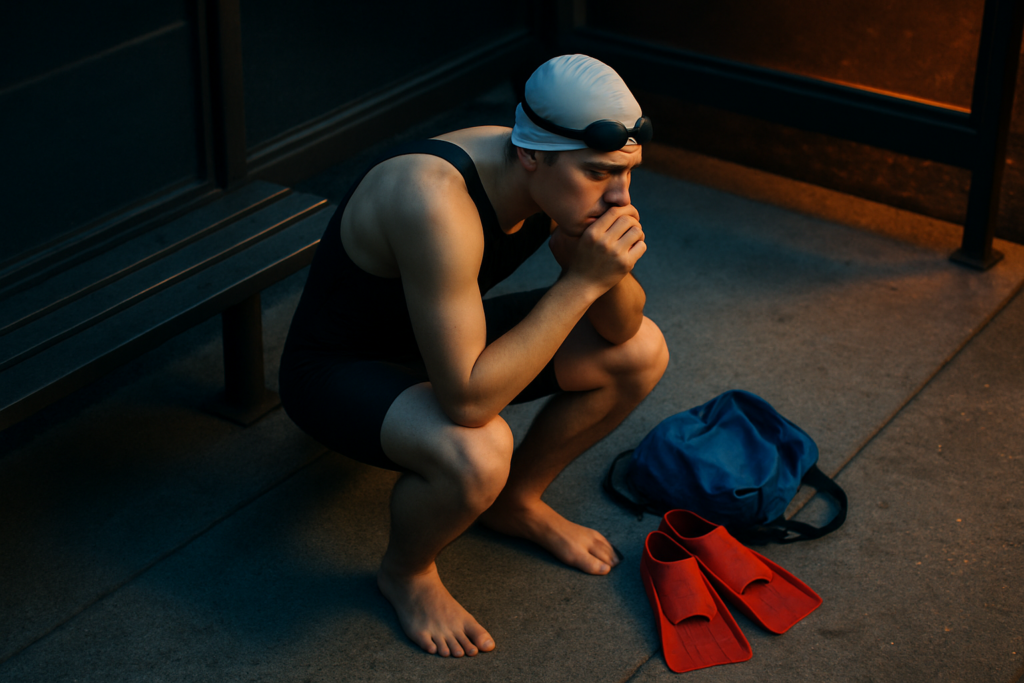Diving headfirst into the world of high-stakes swim meets can feel like plunging into uncharted waters. The pressure to perform at your peak, the adrenaline coursing through your veins as you stand on the edge of the pool, it’s a mix of excitement and nerves that only swimmers truly understand. As a seasoned swimmer myself, I know firsthand the mental and emotional challenges that come with competing in these intense environments.
In this article, I’ll share valuable insights and strategies on how to navigate the turbulent waters of high-stakes swim meets with confidence and composure. From visualization techniques to pre-race rituals, I’ll guide you through practical tips that can help you stay afloat amidst the waves of pressure. So, grab your goggles and swim cap, as we dive into the world of managing the high-stakes drama of competitive swimming.
Understanding the Pressure of High-Stakes Swim Meets
As a competitive swimmer, I know firsthand the intensity of high-stakes swim meets. The pressure, thrill, and anxiety can be overwhelming, but with the right mindset and strategies, swimmers can navigate these challenges effectively.
- Psychological Impact on Athletes
The psychological impact of high-stakes swim meets on athletes is immense. The sheer magnitude of the competition, the expectations, and the adrenaline rush can significantly affect the mental state of swimmers. It’s crucial for athletes to cultivate mental resilience, focus, and confidence to perform at their peak under such intense pressure. - Common Sources of Stress in Competitive Swimming
In competitive swimming, various sources of stress can contribute to the pressure felt by athletes. From the fear of failure to the weight of expectations from coaches, teammates, and oneself, swimmers face multiple stressors. Additionally, the competitive nature of the sport, the desire to succeed, and the uncertainty of outcomes add to the stress levels experienced by swimmers during high-stakes meets.
Strategies for Coping with Pressure Before the Meet
As a competitive swimmer, I understand the importance of preparing both mentally and physically to handle the intense pressure of high-stakes swim meets. Here are some effective strategies to help you cope with the pressure before the big event.
Mental Preparation Techniques
When it comes to mental preparation for a high-stakes swim meet, I find that visualization is a powerful tool. Visualizing yourself successfully completing your race can build confidence and reduce anxiety. It’s essential to practice visualization regularly leading up to the meet to reinforce a positive mindset.
Another helpful technique is setting realistic goals. By establishing achievable goals for the meet, you can focus on your performance rather than external pressures. This approach can help alleviate stress and keep you motivated throughout your preparation.
Physical Preparation and Routine
In addition to mental readiness, physical preparation is key to performing well under pressure. Ensuring that you maintain a consistent training routine leading up to the meet is crucial. Stick to your training schedule, focus on technique, and gradually taper your workouts as the competition approaches to prevent burnout.
Having a pre-race routine can also help you feel more prepared and at ease before the meet. Establishing a routine that includes warm-up exercises, stretches, and mental focus techniques can create a sense of familiarity and calmness on the day of the event.
By combining effective mental preparation techniques with a solid physical training regimen and routine, you can enhance your ability to cope with pressure before high-stakes swim meets and improve your overall performance in competitive swimming events.
During the Meet: Maintaining Composure

Focus Techniques During Events
During high-stakes swim meets, maintaining focus is crucial to deliver peak performance. I find that focusing on one aspect of my race at a time keeps me centered and lessens overwhelming feelings. By concentrating on my technique, breathing, or pacing in different sections of the race, I can stay composed and avoid distractions.
Importance of In-Meet Adjustments
Making quick adjustments during a swim meet can be a game-changer. I’ve learned that being adaptable and open to change is key to success in high-pressure situations. Whether it’s modifying my stroke technique mid-race or adjusting my race strategy based on competitors’ movements, being flexible helps me navigate unexpected challenges effectively.
After the Meet: Recovery and Reflection
As I reflect on my performance at high-stakes swim meets, it’s crucial to analyze my performance objectively and identify areas for improvement.
Analyzing Performance Objectively
After a challenging meet, I assess my performance objectively by reviewing race metrics, discussing with my coach, and pinpointing strengths and weaknesses. It’s essential to focus on concrete data rather than subjective feelings to make informed decisions for future races.
Stress Relief and Emotional Recovery
Following intense competitions, I prioritize stress relief and emotional recovery. Engaging in relaxation techniques such as deep breathing, meditation, or spending time with supportive teammates helps me unwind and recharge. It’s important to acknowledge and address any negative emotions to maintain mental well-being for upcoming events.
Role of Coaches and Support Teams
In high-stakes swim meets, the role of coaches and support teams is pivotal for the success of athletes. As a swimmer, having a strong support system can significantly impact performance and mental well-being.
Developing a Supportive Environment
I believe creating a supportive environment is crucial for swimmers participating in high-stakes meets. Coaches and support teams should cultivate a positive and encouraging atmosphere that instills confidence in athletes. By fostering a sense of belonging and trust, swimmers can feel more secure and motivated to perform at their best.
Communication Strategies for Coaches
Effective communication is key in helping swimmers navigate the pressures of high-stakes competitions. Coaches should maintain open lines of communication, providing feedback, guidance, and encouragement. Clear and constructive communication ensures that swimmers understand expectations, feel supported, and can address any concerns they may have. By fostering a healthy coach-athlete relationship, coaches can help athletes stay focused, motivated, and resilient during challenging swim meets.


 is a dedicated fitness enthusiast with a deep-seated passion for swimming and holistic health. Leveraging her extensive background in competitive swimming and personal training, she provides readers with expert advice on optimizing their workouts and enhancing their overall well-being. Kiara's writing stands out for its blend of motivation and practical tips, making complex fitness concepts accessible and actionable. She is committed to helping individuals of all levels reach their fitness goals by promoting a balanced approach to exercise and nutrition. In her articles on Swim Fast Stay Fit, Kiara shares her personal experiences, training techniques, and strategies for overcoming common fitness challenges, inspiring others to lead healthier and more active lives.
is a dedicated fitness enthusiast with a deep-seated passion for swimming and holistic health. Leveraging her extensive background in competitive swimming and personal training, she provides readers with expert advice on optimizing their workouts and enhancing their overall well-being. Kiara's writing stands out for its blend of motivation and practical tips, making complex fitness concepts accessible and actionable. She is committed to helping individuals of all levels reach their fitness goals by promoting a balanced approach to exercise and nutrition. In her articles on Swim Fast Stay Fit, Kiara shares her personal experiences, training techniques, and strategies for overcoming common fitness challenges, inspiring others to lead healthier and more active lives.
